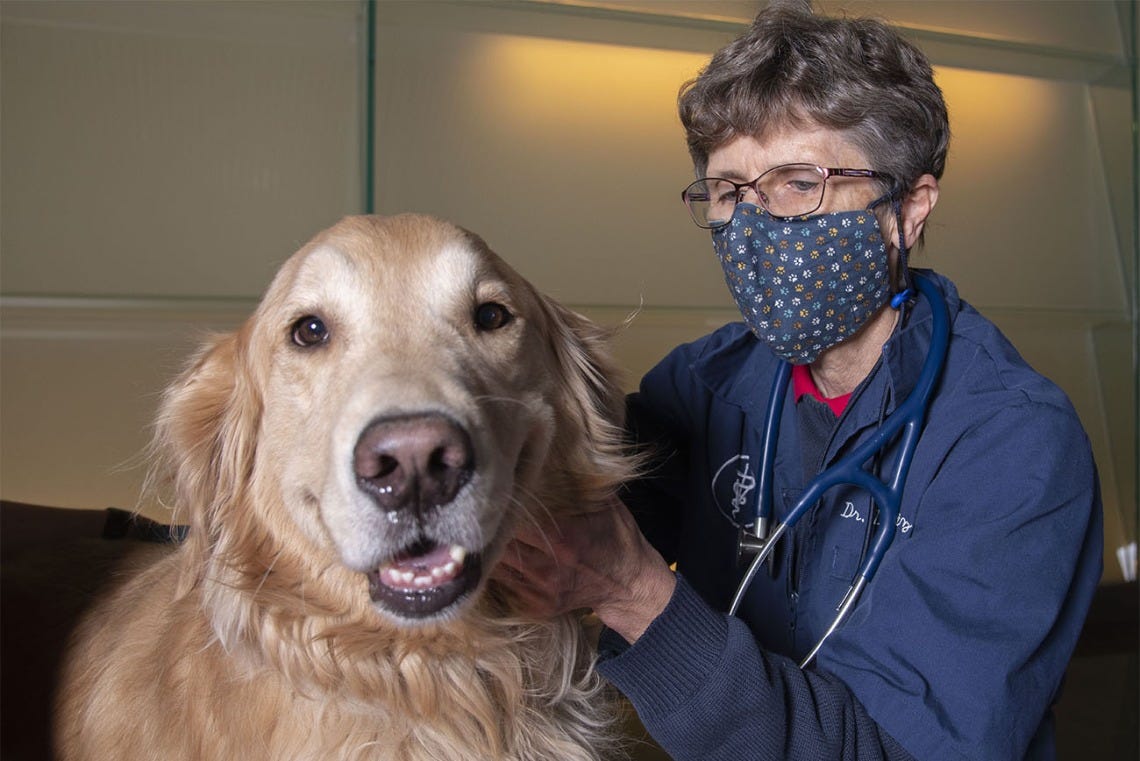Climate Tucson: Dogs & Valley fever, a dangerous mix
Dogs take the brunt of the bad effects from this fungal disease living in the dirt where they like to sniff and dig

If you live in Tucson, Phoenix or parts of central California, be aware that an often fatal canine disease is lying just below the surface of the soil.
Dogs, even compared to humans, are the primary victims of Valley fever and four times more likely to get the disease — notably because they hunt, they’re closer to the ground, and like to dig in the dirt where the spores that spread the disease live.
Valley fever can wreak havoc on a canine's body. It can occur in most any bone or organ. If not caught quickly, the disease can present itself through lameness or swelling of limbs; seizures; soft abscess-like swelling under the skin; swollen lymph nodes; non-healing skin wounds that ooze fluid; eye inflammation with pain or cloudiness — and more, according to the Valley Fever Center for Excellence at the University of Arizona in Tucson.
The most common symptoms are coughing, fever, weight loss, lack of appetite, lack of energy, all of themconditions that can mask the full extent of a Valley fever infection.
The fact that Valley fever infects dogs so vengefully has been, ironically, a shining light in the decades of trying to pierce the dank mysteries of this ancient fungus. For instance, science does not yet know exactly where the Coccidioidomycosis spores live within its territory—two-thirds of which is in Arizona—except that it prefers the dirt. And no one can find that illusive spot unless they spend their lives shoveling dirt and testing it for Valley fever.
But when a pet dog gets sick, the infection site can be more easily identified and studied—and avoided.
It also happens that both the owner and the dog can get Valley fever within weeks of one another, which also helps pinpoint infection boundaries.
While "Cocci" is not contagious, it is long-lived where it grows. For example, there is an abandoned former dog shelter in Tucson where numerous canine infections broke out 50 years ago. Vacant, the ground is still home to the spores.
This year may be the year when cocci meets its match: the dogs themselves. On the horizon awaiting final approval is canine vaccine, which is the only sure way to disrupt Valley fever’s spread. Under review and expected to be approved by the U.S. Department of Agriculture, which handles veterinary medicine, it also represents a pathway for a human vaccine.
“It’s nearly impossible to know how sick a dog may be and once the disease has been detected, it’s often too late.”
“A canine vaccine is the first step toward a human one,” says John N. Galgiani, who helped found and is the director of the Valley Fever Center for Excellence at the University of Arizona. He couldn’t be more enthusiastic for what has been long in coming.
“We could have a vaccine this year,” says Galgiani.
The vaccine can’t come soon enough for Lisa Shubitz, also with the Valley fever center, a veterinarian and a key researcher behind the formulation now under review. “I live in the trenches and take care of all these horribly sick dogs,” she said on our Zoom call.
“In Arizona, for the dogs it would become a ‘core vaccine’ and join the ranks of distemper and rabies shots,” says Shubitz.
Her voice lowering, Shubitz says she sees “many, many really sick animals” in her work, adding that the large numbers of dog fatalities of unknown origin at animal control facilities “are probably from Valley fever.”
With an animal, it’s nearly impossible to know how sick it may be and once the disease has been detected, it’s often too late.
“We really do have high hopes that this vaccine will greatly reduce the amount of clinically ill dogs that we have to deal with and the severity of the disease,” says Shubitz, adding, from harsh reality, “Cocci doesn't care about people and dogs.”
See also, “Valley fever season is here”
For information on Valley fever in dogs and cats, visit the Valley Fever Center for Excellence.



